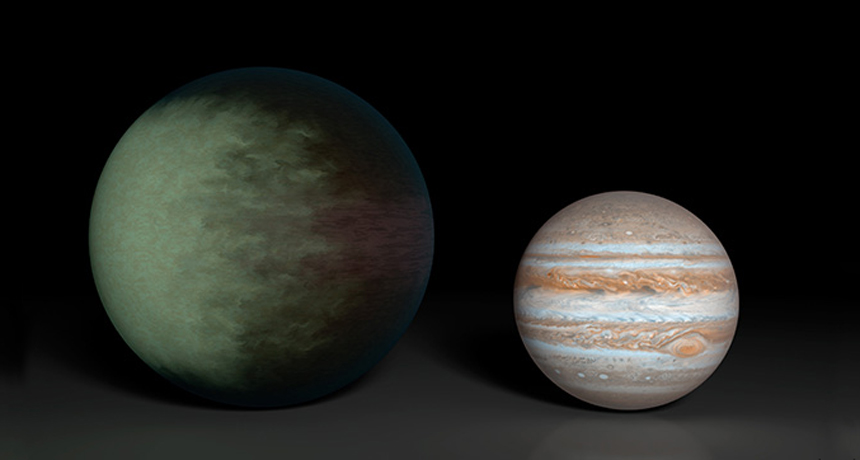Maps reveal clouds on distant exoplanet
Astronomers chart the atmosphere of Kepler-7b

CLOUD MAP Astronomers have made the first cloud map of an exoplanet. This artist’s conception of Kepler-7b (left), which has a radius 1.5 times that of Jupiter (right), shows what those clouds might look like.
JPL-Caltech/NASA and MIT







